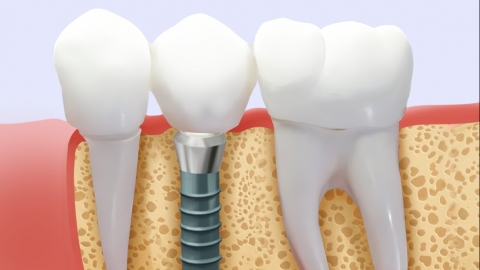Is it possible to have dental implants if there are remaining tooth roots?
Generally speaking, dental implantation refers to the surgical procedure of dental implantation, and if a tooth root is present, dental implant surgery usually cannot be performed directly. The detailed explanation is as follows:

Dental implant surgery involves placing an implant into the alveolar bone of the edentulous area in the mouth. After the implant has integrated successfully, a restoration is then fabricated on top of it to complete the tooth repair. If a tooth root already exists in the mouth, whether it can be preserved or not, appropriate treatment must first be carried out.
For tooth roots that can be preserved, alternative restoration methods are typically recommended, such as making an overdenture or post-core crown restoration. An overdenture involves grinding down the occlusal surface of the natural tooth and then fabricating a denture that covers the natural tooth. Post-core crown restoration involves inserting a post into the root canal of the tooth, building up dental material around it to form a core, and finally fabricating a crown to cover the entire tooth. If the tooth root cannot be preserved, it must be extracted before undergoing dental implant surgery. After removing the tooth root, a period of healing is required to allow the alveolar bone to recover, ensuring the implant can be securely placed into the jawbone.
Prior to undergoing dental implant surgery, a comprehensive oral examination and evaluation are necessary to understand the condition of the teeth and alveolar bone.




